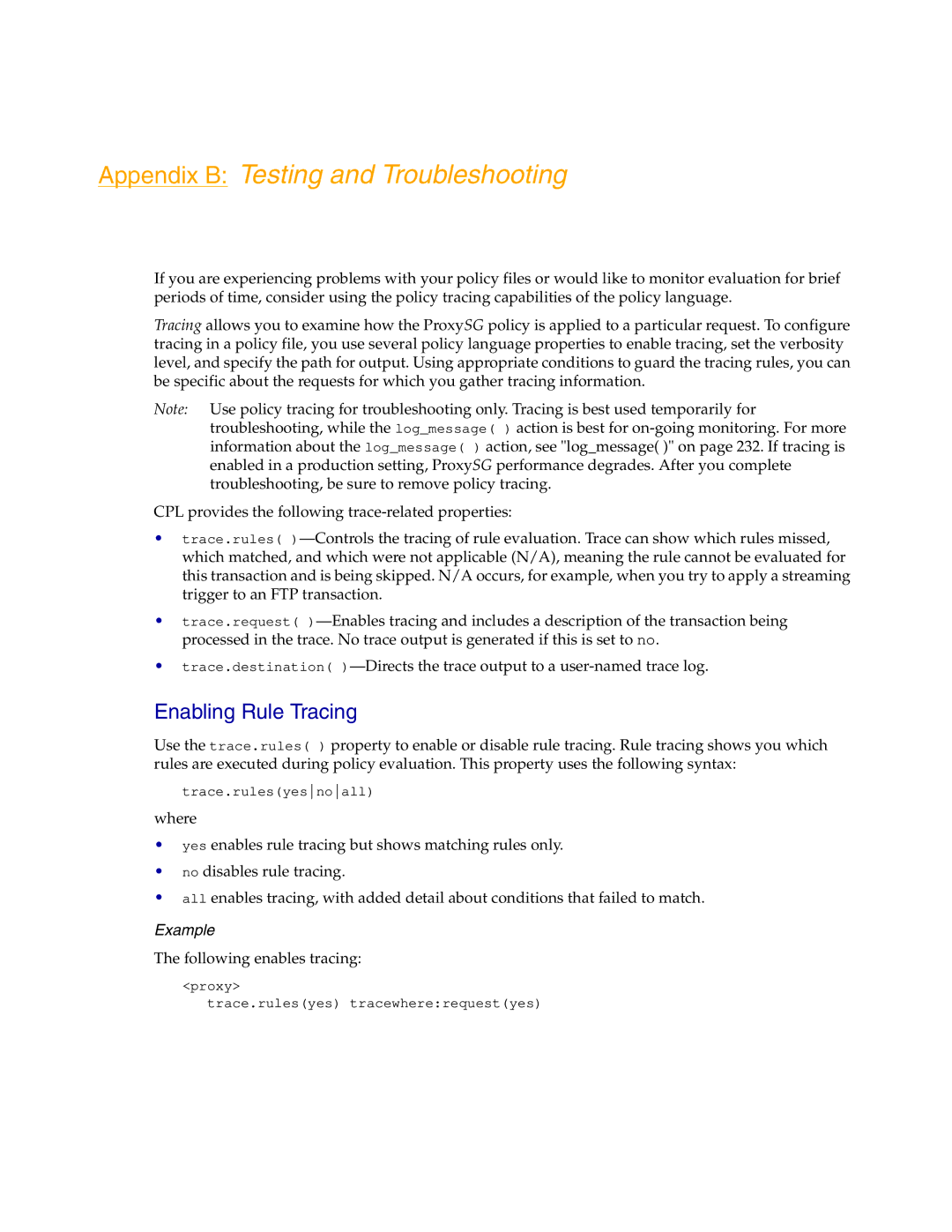Appendix B: Testing and Troubleshooting
If you are experiencing problems with your policy files or would like to monitor evaluation for brief periods of time, consider using the policy tracing capabilities of the policy language.
Tracing allows you to examine how the ProxySG policy is applied to a particular request. To configure tracing in a policy file, you use several policy language properties to enable tracing, set the verbosity level, and specify the path for output. Using appropriate conditions to guard the tracing rules, you can be specific about the requests for which you gather tracing information.
Note: Use policy tracing for troubleshooting only. Tracing is best used temporarily for troubleshooting, while the log_message( ) action is best for
CPL provides the following
•trace.rules(
•trace.request(
•trace.destination(
Enabling Rule Tracing
Use the trace.rules( ) property to enable or disable rule tracing. Rule tracing shows you which rules are executed during policy evaluation. This property uses the following syntax:
trace.rules(yesnoall)
where
•yes enables rule tracing but shows matching rules only.
•no disables rule tracing.
•all enables tracing, with added detail about conditions that failed to match.
Example
The following enables tracing:
<proxy>
trace.rules(yes) tracewhere:request(yes)
